If you have black leaves on your rhododendron, don’t panic. There are a few possible causes, and even more possible solutions. In this article, we’ll explore eleven possible causes of black leaves on rhododendrons, as well as their solutions. With a little investigation and a bit of trial-and-error, you should be able to figure out what’s causing the problem and get your plant back to good health in no time.
Root Rot and Stem Rot
If you notice black leaves on your rhododendron, it could be a sign of root rot or stem rot. Both of these problems can be caused by too much water, poor drainage, or a lack of sunlight.
If you think your plant has root rot, you should remove it from the pot and check the roots. If they are black and mushy, you will need to cut away the affected roots and replant in fresh soil. Root rot is a serious problem that can kill your plant.

You can then replant in fresh soil and water regularly. Stem rot is not as serious as root rot, but it can still damage your plant. If you notice stem rot, you should cut away the affected stems and leaves.
Solution
Black leaves on Rhododendron can be caused by a variety of factors, including over- watering, under- watering, pests, disease, and environmental stress. Luckily, there are a few simple solutions that can help bring your plant back to health.
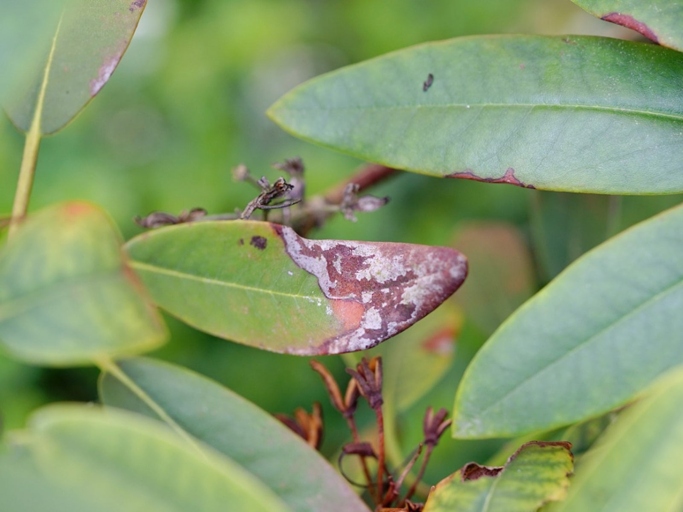
If you think you may have overwatered your Rhododendron, the first step is to reduce watering frequency and allow the soil to dry out slightly between watering. If the leaves are still black and wilted, you can try gently removing them with your fingers.
If the leaves are still black and wilted, you can try gently removing them with your fingers. If you think you may have underwatered your Rhododendron, the first step is to increase watering frequency.
If you think your Rhododendron may be infested with pests, the first step is to inspect the leaves for signs of pests. If you see any, you can try gently removing them with your fingers or a cotton swab dipped in rubbing alcohol.
If you think your Rhododendron may be suffering from a disease, the first step is to consult a professional. They will be able to diagnose the problem and recommend a course of treatment.
Once you have done that, you can take steps to mitigate the stress, such as moving the plant to a more sheltered location. If you think your Rhododendron may be experiencing environmental stress, the first step is to try to identify the source of the stress.
Anthracnose
Anthracnose can be fatal to rhododendrons, so it is important to take steps to prevent and control the disease. The disease causes black or brown lesions on the leaves of the affected plant. Anthracnose is a fungal disease that affects many different types of plants, including rhododendrons.

There are several things that you can do to prevent anthracnose from occurring in your rhododendrons. Third, avoid overhead watering, which can promote the growth of the fungus. First, make sure to plant your rhododendrons in an area that has good drainage. Second, water your rhododendrons early in the day so that the leaves have time to dry before nightfall.
Second, apply a fungicide to the plant, following the directions on the label. If your rhododendron already has anthracnose, there are a few things that you can do to treat the disease. First, remove any affected leaves from the plant. Finally, make sure to keep the area around the plant clean and free of debris, which can harbor the fungus.
Solution
If you have black leaves on your rhododendron, don’t worry – there are a few possible causes, and even more possible solutions. Here are eleven possible causes of black leaves on rhododendron, and what you can do to fix the problem.
1. Too Much Sun
If your rhododendron is in a sunny spot, try moving it to a shadier location. Rhododendrons need filtered sunlight, and too much direct sun can cause the leaves to turn black.
Too Much Water 2.
Be sure to check the soil before watering, and only water when the top inch or so is dry. Overwatering can also cause black leaves on rhododendrons.
Not Enough Water 3.
If the leaves are wilted or drooping, give your rhododendron a good drink. On the other hand, not watering enough can also cause black leaves.
4. Poor Drainage
Try planting in a raised bed or on a mound to improve drainage. Rhododendrons need well-drained soil, so if the leaves are black and mushy, the problem may be poor drainage.
Fungal Disease 5.
If you see black spots or streaks on the leaves, try treating with a fungicide. Fungal diseases are a common cause of black leaves on rhododendrons.
6. Bacterial Disease
If the leaves are black and mushy, or if there is a foul odor, bacteria may be to blame. Treat with a bactericide. Bacterial diseases can also cause black leaves.
7. Insect Infestation
If you see black spots or streaks on the leaves, or if the leaves are being eaten, insects are likely the culprit. Insects can also cause black leaves on rhododendrons. Treat with an insecticide.
Nutrient Deficiency 8.
If the leaves are black and the plant is not growing well, it may be due to a nutrient deficiency. Try fertilizing with a balanced fertilizer.
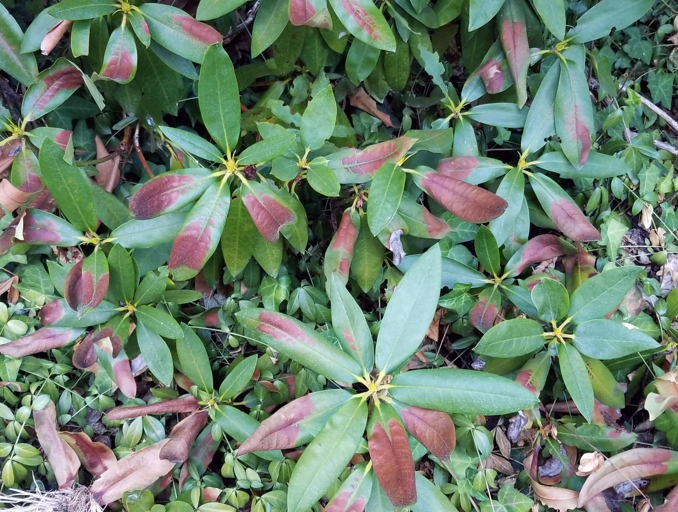
9. Temperature Stress
Protect the plant from frost by covering it with a cloth or burlap. Rhododendrons are sensitive to temperature extremes, and both hot and cold weather can cause black leaves. If the leaves are black and the plant is dead, it may be due to cold damage. If the leaves are black and the plant is wilted, it may be due to heat stress. Move the plant to a cooler location.
10. Chemical Injury
This can be caused by using too much fertilizer, or by using a fertilizer with too high a concentration of nitrogen. If the leaves are black and the plant is wilted or dead, it may be due to chemical injury. If you suspect chemical injury, stop using the chemical and call your local Cooperative Extension office for advice. It can also be caused by using herbicides or pesticides that are not labeled for use on rhododendrons.
Root Rot 11.
The best way to prevent root rot is to plant in well-drained soil. Root rot is a common cause of black leaves on rhododendrons. If the plant is already infected, try treating with a fungicide. If the leaves are black and the plant is wilted, it may be due to root rot.
Sooty Mold
But sometimes, these plants can develop black leaves due to a condition called sooty mold. Here are some tips on how to deal with sooty mold on rhododendrons. Sooty mold is a type of fungus that grows on the leaves of plants, and it can be a problem for rhododendrons if not treated properly. Rhododendrons are a beautiful, flowering shrub that can add color and life to any garden.

To get rid of the sooty mold, you’ll need to get rid of the pests that are causing it. First, it’s important to identify the cause of the sooty mold. If the plant is infested with aphids, scale, or whiteflies, these pests will secrete a sticky substance called honeydew that the sooty mold can grow on. This can be done with insecticidal soap, horticultural oil, or other pesticides.
Be sure to rinse the leaves well afterwards to remove all traces of the soap. If the mold is stubborn, you can use a pressure washer on a low setting. You can also try using a leaf blower to remove the sooty mold. Once the pests are gone, you can remove the sooty mold by washing the leaves with a mild soap and water solution.
Also, make sure to prune away any dead or dying leaves, as these can provide a food source for sooty mold. Prevent sooty mold from coming back by keeping your rhododendrons healthy and free of pests. Inspect the plants regularly for signs of pests, and treat them promptly if you find any. With a little care, you can keep your rhododendrons looking their best.
Solution
If you have black leaves on your rhododendron, don’t worry – there are a few possible causes, and even more possible solutions. Here are eleven possible causes of black leaves on rhododendron, and what you can do to fix the problem.
Too Much Water 1.
If you’re giving your rhododendron too much water, the leaves will start to turn black. The best solution is to cut back on watering, and make sure the plant is in well-drained soil.

Too Much Sun 2.
Move the plant to a shadier spot, and make sure it’s not in direct sunlight. If the leaves are black and crispy, it’s likely that they’re getting too much sun.
Not Enough Water 3.
Water the plant more frequently, and make sure the soil is moist but not soggy. If the leaves are wilting and black, it’s likely that the plant isn’t getting enough water.
Not Enough Fertilizer 4.
Use a balanced fertilizer, and apply it according to the package directions. If the leaves are black and the plant isn’t blooming, it might need more fertilizer.
Too Much Fertilizer 5.
Cut back on the fertilizer, and make sure you’re not over-fertilizing. If the leaves are black and the plant is wilting, it’s possible that you’re using too much fertilizer.
6. Pest Infestation
If the leaves are black and there are small insects crawling on them, the plant has a pest infestation. The best solution is to treat the plant with an insecticide.
Disease 7.
If the leaves are black and there is no obvious cause, the plant might have a disease. The best solution is to take the plant to a nursery or garden center, and have it diagnosed.
Poor Soil Quality 8.
Improve the soil quality by adding organic matter, and make sure the plant is in well-drained soil. If the leaves are black and the plant isn’t growing well, the soil might be to blame.
9. Temperature Stress
If the leaves are black and the plant is wilting, it might be experiencing temperature stress. Move the plant to a cooler spot, and make sure it’s not in direct sunlight.
10. Chemical Stress
If the leaves are black and the plant is wilting, it might be experiencing chemical stress. The best solution is to stop using fertilizer, and see if the problem improves. This can be caused by using too much fertilizer, or by using the wrong type of fertilizer.
Environmental Stress 11.
This can be caused by too much sun, too much wind, or too much heat. If the leaves are black and the plant is wilting, it might be experiencing environmental stress. The best solution is to move the plant to a more sheltered spot.
Bacterial Leaf Spot
The leaves of the plant turn black and the plant can eventually die if the problem is not treated. If you suspect that your Rhododendron has bacterial leaf spot, you should take it to a nursery or garden center for diagnosis and treatment. There are many causes of bacterial leaf spot, but the most common is poor drainage. The bacteria that cause the leaf spot thrive in wet conditions, so it is important to make sure that your Rhododendron is planted in well-drained soil. Bacterial leaf spot is a common problem for Rhododendron owners.
Solution
If you have black leaves on your rhododendron, don’t panic! There are a few possible reasons for this, and most of them have simple solutions.
If your rhododendron is in a sunny spot, try moving it to a shadier location. One common reason for black leaves is sunburn. Another reason for black leaves is too much or too little water. Make sure you’re watering your rhododendron regularly and not over- or under- watering it.
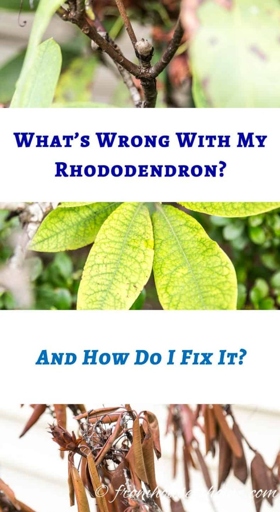
They’ll be able to help you diagnose the problem and find a solution. If you can’t figure out what’s causing the black leaves, take a sample of the affected leaves to your local nursery or garden center.
Insect Infestation
If you have black leaves on your rhododendron, it’s likely due to an insect infestation. There are a few different insects that can cause this problem, but the most common are aphids, scale, and mites. All of these insects feed on the plant’s sap, which can cause the leaves to turn black.
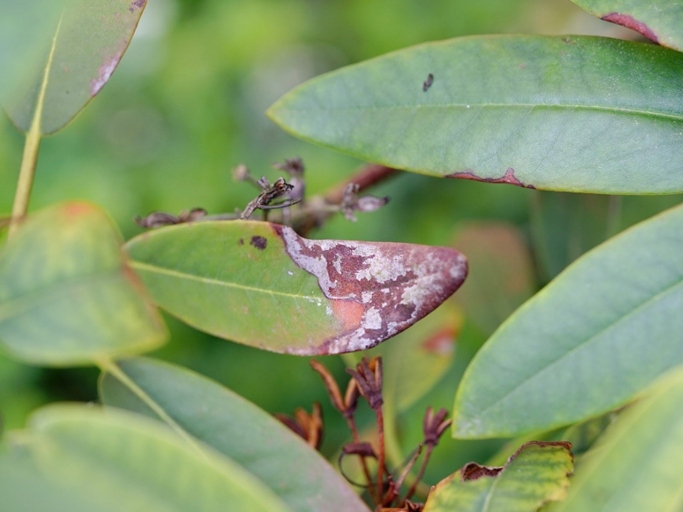
Be sure to follow the instructions on the label carefully, as some insecticides can be harmful to plants. To get rid of these pests, you’ll need to use an insecticide. You may need to apply the insecticide more than once to completely get rid of the pests.
This will help to prevent the spread of the infestation. In some cases, you may also need to prune away any affected leaves or branches.
Solution
One of the most common is black leaves. Rhododendrons are a beautiful and popular plant, but they can be susceptible to a number of problems.
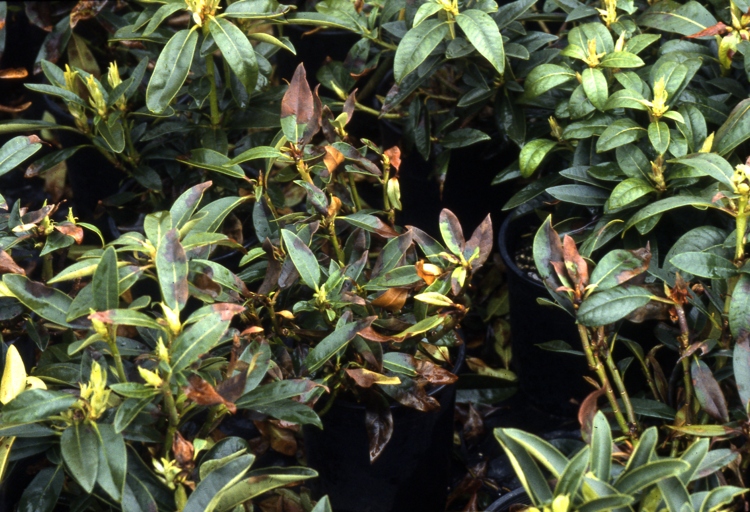
If the plant is getting too much water, the leaves can also turn black. If the plant is in direct sunlight for too long, the leaves can start to turn black. Another possibility is too much water. There are a few possible causes of black leaves on rhododendrons. One is too much sun.
If the plant is getting too much water, you can reduce the amount of water you’re giving it. The best solution for black leaves on rhododendrons is to move the plant to a spot that gets more shade.
Low Humidity
If the air is too dry, the leaves will start to turn black and eventually drop off. Rhododendrons are native to humid environments and need high humidity levels to thrive. If you notice that the leaves on your rhododendron are turning black, it could be due to low humidity.

You can also set up a humidifier near the plant. First, try misting the leaves with water a few times a day. With a little extra care, your rhododendron should start to look better in no time. Be sure to keep an eye on the humidity levels and adjust as needed. There are a few things you can do to increase the humidity around your rhododendron.
Solution
If you have black leaves on your rhododendron, don’t panic! Here are eleven causes of black leaves on rhododendrons, and what you can do to fix the problem. There are a few possible causes, and even more possible solutions.
1. Too Much Sun
If your rhododendron is in a sunny spot, try moving it to a shadier location. Rhododendrons need filtered sunlight, and too much direct sun can cause the leaves to turn black.
Too Much Water 2.
Overwatering can also cause black leaves, as the roots can’t get the oxygen they need. If you think you’re overwatering, cut back on watering and make sure the soil is well-drained.
Not Enough Water 3.
Make sure to give your rhododendron enough water, and don’t let the soil dry out completely. On the other hand, not watering enough can also cause black leaves.
Poor Soil 4.
You can test your soil’s pH and amend it accordingly. Rhododendrons need acidic soil to thrive, so if your soil is too alkaline, it could be causing black leaves.
Nutrient Deficiencies 5.
Certain nutrient deficiencies can also cause black leaves. You can amend the soil with compost or other organic matter, or use a fertilizer designed for rhododendrons. For example, iron deficiency can cause leaves to turn yellow or black.
6. Pest Infestation
If you see any pests on your plant, treat them accordingly. Pests like aphids, mites, and scale can all cause black leaves.
Disease 7.
If you suspect your plant is diseased, take it to a nursery or garden center for diagnosis and treatment. There are a few diseases that can cause black leaves on rhododendrons, including botrytis and powdery mildew.
Environmental Stress 8.
Too much wind, cold, or heat can all cause black leaves. If your plant is exposed to extreme weather, try moving it to a more protected location.
Poor Air Circulation 9.

Make sure your plant has good airflow and isn’t crowded by other plants. Poor air circulation can also cause black leaves, as it can lead to fungal diseases.
10. Too Much Fertilizer
Cut back on fertilizer, or switch to a slow-release fertilizer. If you’ve been fertilizing your rhododendron, too much fertilizer can actually cause black leaves.
Chemical Burns 11.
Stop using any chemicals and see if the problem improves. If you’ve been using chemicals on your rhododendron, they could be causing black leaves.
Heat Stress and Sunburn
Heat stress and sunburn are two of the most common problems that can affect rhododendrons. Both can cause the leaves to turn black and can eventually kill the plant.
This can happen if the plant is placed in direct sunlight or if the air temperature is too hot. Sunburn occurs when the leaves are exposed to direct sunlight for too long and the leaves get damaged. Heat stress occurs when the plant is exposed to temperatures that are too high for it to tolerate.
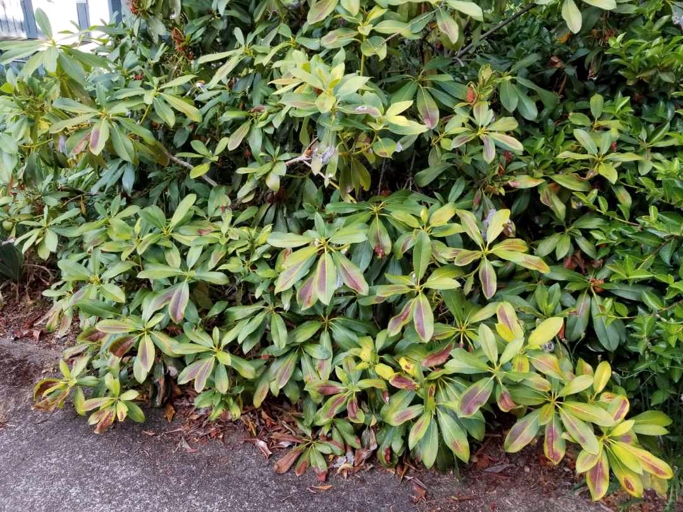
If it is, provide some shade or ventilation. If it is, move it to a shadier spot. First, make sure that the plant is not placed in direct sunlight. Second, make sure that the air temperature is not too hot. There are a few things that you can do to prevent heat stress and sunburn. Finally, water the plant regularly to keep it from getting too dry.
Finally, give the plant time to recover. If your rhododendron does get heat stress or sunburn, there are a few things that you can do to help it recover. Third, apply a sunscreen to the leaves to protect them from further damage. Heat stress and sunburn can be damaging, but with proper care, your rhododendron will eventually recover. Second, water the plant regularly. First, move the plant to a shadier spot.
Solution
There are a few possible causes and solutions. If you have black leaves on your rhododendron, don’t panic!

The solution is to add iron sulfate or iron chelate to the soil. One common cause is called “rhododendron chlorosis.” This is when the leaves turn yellow or brown due to a lack of chlorophyll. Rhododendron chlorosis is usually caused by a lack of iron in the soil.
Another possible cause is called “rhododendron leaf spot.” This is when the leaves turn black or brown due to a fungal infection. The solution is to remove the affected leaves and to treat the plant with a fungicide.
If you’re not sure what’s causing the black leaves on your rhododendron, take a sample of the leaves to your local nursery or Cooperative Extension office. They can help you diagnose the problem and find the best solution.
Low Light
When it comes to low light, there are a few things that can cause black leaves on rhododendron. Here are a few of the most common causes and solutions:
Solution: Move the plant to a location that gets more light. Too much shade – If your rhododendron is getting too much shade, the leaves may turn black. 1.
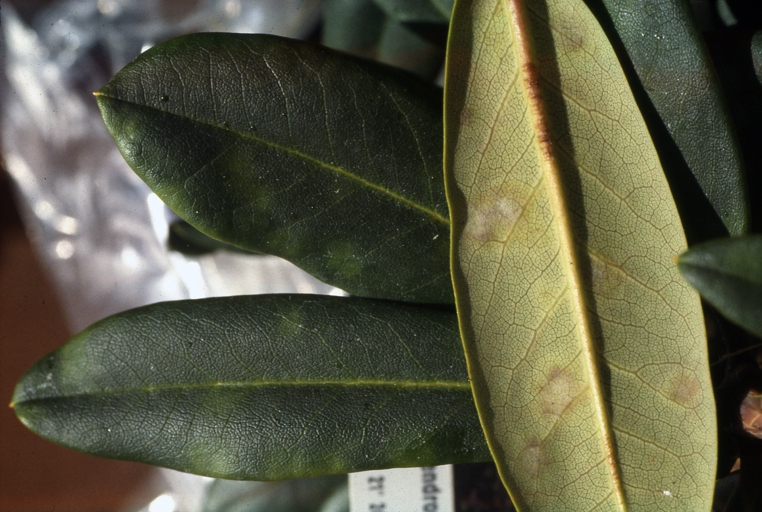
Not enough light – If the plant is not getting enough light, the leaves may turn black. Solution: Move the plant to a location that gets more light. 2.
3. Soil that is too wet – If the soil is too wet, the leaves may turn black. Solution: Improve drainage by adding sand or grit to the soil.
Solution: Water the plant more frequently. 4. Soil that is too dry – If the soil is too dry, the leaves may turn black.
Solution: Treat the plant with an insecticide. Pest infestation – If the plant is infested with pests, the leaves may turn black. 5.
6. Solution: Treat the plant with a fungicide. Disease – If the plant is diseased, the leaves may turn black.
Solution
If you have black leaves on your rhododendron, don’t worry – there are a few possible causes, and even more possible solutions.
If your rhododendron is in a sunny spot, try moving it to a shadier location. One common cause of black leaves is too much sun. Another cause could be too much water – make sure you’re not over- watering your plant.
If you’re still not sure what’s causing the black leaves, try one of these solutions:
-Apply a fungicide to the leaves
-Prune off the affected leaves
-Give the plant extra magnesium
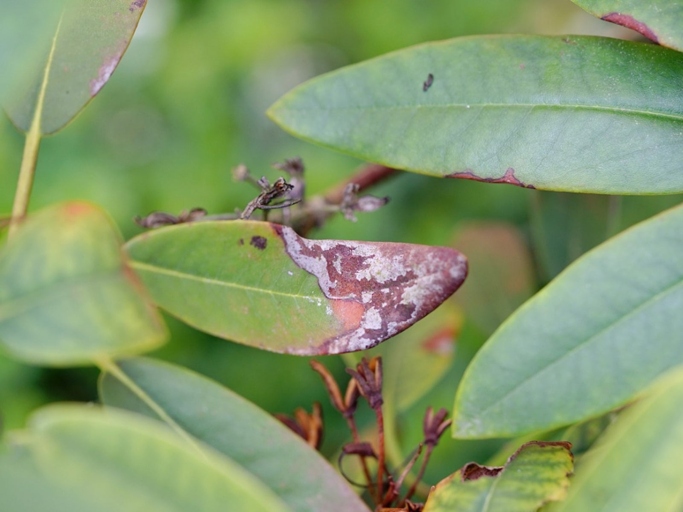
With a little trial and error, you should be able to figure out what’s causing the black leaves on your rhododendron – and how to fix it!
Over or Underwatering
The key is to find a happy medium, and to water your rhododendron only when the soil is dry to the touch. Overwatering can cause the leaves to turn black, while underwatering can cause them to turn brown and wilt. When it comes to rhododendrons, too much or too little water can both lead to problems. If you’re not sure whether you’re watering your rhododendron enough, it’s always better to err on the side of too little water than too much.
Solution
There are a few possible causes of black leaves on rhododendrons, but fortunately, there are also solutions. Rhododendrons are a beautiful addition to any garden, but their black leaves can be unsightly and a cause for concern.
Too much nitrogen can cause the leaves to turn black. When fertilizing rhododendrons, be sure to use a low-nitrogen fertilizer and apply it sparingly. One possible cause of black leaves is over-fertilization.
Solution: Move the rhododendron to a shadier spot. Rhododendrons need partial to full shade, so if they are in too much sun, their leaves can turn black. Another possible cause is sunburn.
Rhododendrons like their soil to be moist but not soggy. If the leaves are black and mushy, it could be a sign of too much water. Solution: Allow the soil to dry out slightly between watering.
Solution: Water the rhododendron more frequently. If the leaves are black and dry, it could be a sign of too little water.
If the leaves are black and curled, it could be a sign of a fungal disease. Solution: Treat the plant with a fungicide.
Finally, if the leaves are black and falling off, it could be a sign of a pest problem. Solution: Treat the plant with an insecticide.

Try one of the solutions above and see if it helps. If you have black leaves on your rhododendron, don’t despair. There is likely a solution.
Over or Under Feeding
If you think you are over or under feeding your rhododendron, here are a few things to look for: Over or under feeding your rhododendron can cause black leaves.
-If the leaves are black and dry, this is a sign of overfeeding.
-If the leaves are black and mushy, this is a sign of underfeeding.
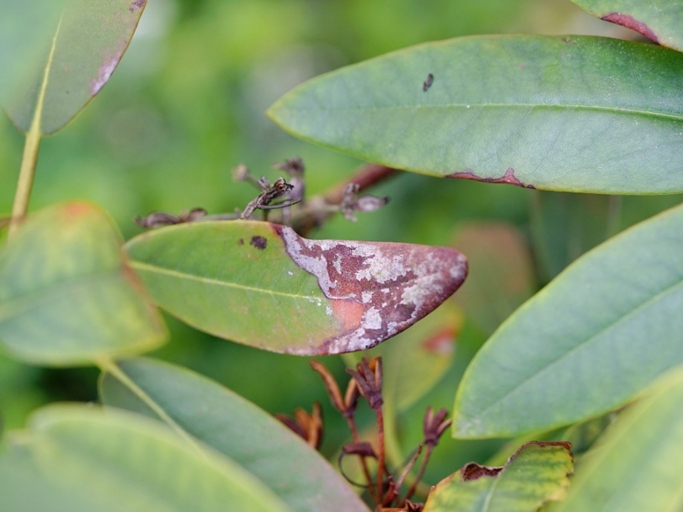
-If the leaves are black and stiff, this is a sign of underfeeding.
If you see any of these signs, adjust your feeding schedule accordingly.
Solution
When it comes to black leaves on rhododendron, there are a few potential causes and solutions to explore. Finally, if your plant is stressed from lack of water or nutrients, this can also cause the leaves to turn black. These pests can be controlled with an insecticide. If your plant is infested with aphids, they may also be to blame. Another potential cause is a fungal disease called sooty mold, which can be treated with a fungicide. Be sure to keep your rhododendron well-watered and fertilized to prevent this from happening. One common cause is simply too much sun exposure, which can cause the leaves to scorch and turn black. If this is the case, try moving your plant to a shadier spot.
Salt Build-up in Soil
Salt build-up can be caused by a number of factors, including over- watering, using water that is high in minerals, or fertilizing with a fertilizer that is high in salt. If you notice salt build-up on the leaves of your rhododendron, it’s a good idea to take action to correct the problem.
You may need to do this several times to completely remove the salt. If you suspect that salt build-up is the problem, the first step is to leach the salt from the soil. To do this, water the plant deeply with plain water, allowing the water to run through the soil and flush out the salt.
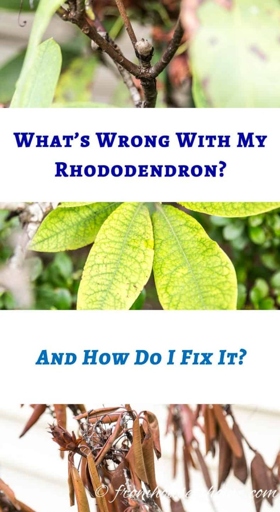
Water your rhododendron with plain water or rainwater, and avoid using water that is high in minerals. Once the salt is removed from the soil, you can take steps to prevent it from returning. When fertilizing, use a fertilizer that is low in salt.
Solution
If you have black leaves on your rhododendron, don’t despair. There are a number of possible causes and solutions.
One possible cause is too much sun. If your rhododendron is in a sunny spot, try moving it to a shadier location. Another possible cause is too much water. If you think your rhododendron is getting too much water, try letting the soil dry out a bit between watering.
If you’re not sure what the cause is, try one of the following solutions:
-Apply a balanced fertilizer to the soil around the plant.
-Prune off any affected leaves.
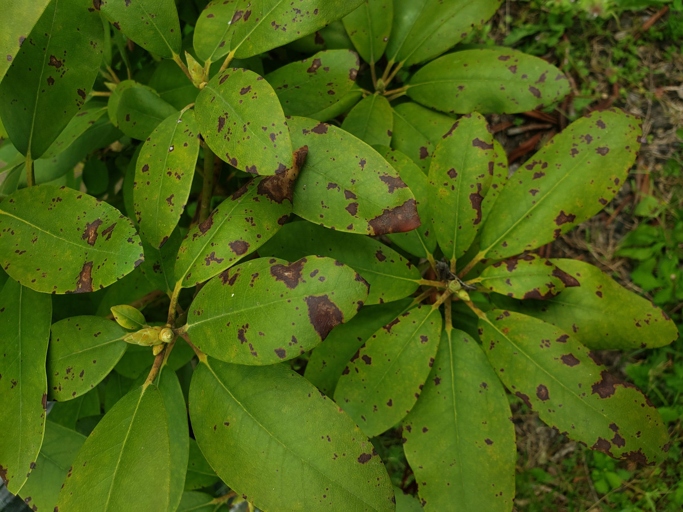
-Spray the plant with a garden hose to remove any dust or dirt that may be on the leaves.
With a little trial and error, you should be able to figure out what’s causing the black leaves on your rhododendron and fix the problem.
How to Prevent Blackening of Rhododendron Leaves
If you have black leaves on your rhododendron, don’t despair. There are a few things you can do to prevent the blackening of the leaves.

First, make sure that your rhododendron is getting enough water. If the leaves are wilting or drooping, it’s a sign that the plant is thirsty. Water deeply and regularly, making sure that the soil is always moist but not soggy.
Too much direct sunlight can scorch the leaves, causing them to turn black. filtered sunlight is best. Second, give your rhododendron some shade.
Rhododendrons need a well-balanced fertilizer, applied according to the package directions. Finally, make sure that the plant is getting enough nutrients. A lack of nutrients can also cause the leaves to turn black.
With a little care, you can prevent black leaves on your rhododendron.
Frequently Asked Questions
1. What are the most common causes of black leaves on rhododendron?
There are several potential causes of black leaves on rhododendron, including:
-Insect infestation
-Disease
-Excess sun exposure
-Excess water
-Lack of nutrients
2. How can I tell if my rhododendron has an insect infestation?
If your rhododendron has black leaves, it is likely that an insect infestation is to blame. Common signs of an insect infestation include:
-Leaves that are blackened or discolored
-Leaves that are covered in small black dots
-Leaves that are chewed or damaged
3. What are some common diseases that can cause black leaves on rhododendron?
There are several diseases that can cause black leaves on rhododendron, including:
-Black root rot
-Powdery mildew
-Leaf spot
4. How can I prevent my rhododendron from getting black leaves?
There are several things you can do to prevent black leaves on rhododendron, including:
-Inspecting your plant regularly for signs of insects or disease
-Avoiding over-exposure to sun or water
-Fertilizing regularly
5. What should I do if my rhododendron already has black leaves?
If your rhododendron already has black leaves, you should:
-Inspect the plant for signs of insects or disease
-Remove and destroy any affected leaves
-Apply an appropriate insecticide or fungicide
Final thoughts
If you have black leaves on your rhododendron, it could be caused by any of the 11 issues listed in the article. But don’t worry, there are solutions for each problem. With a little investigation and care, you can get your rhododendron looking healthy and green again in no time.
